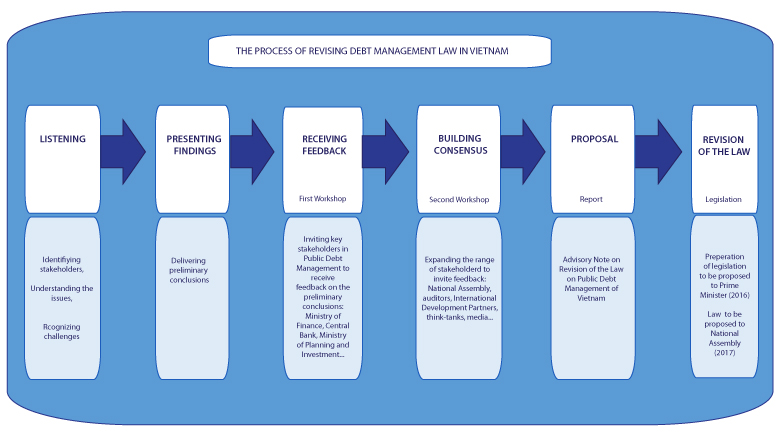Workers start their day at 6 am at the construction site of the 460-meter-high skyscraper in Ho Chi Minh City, which is set to become the tallest building in Vietnam once completed.
Vietnam is growing and growing fast. In the last 30 years, Vietnam has become one of the world’s great development success stories, rising from the ranks of the poorest countries. On the strength of a nearly 7% average growth rate and targeted government policies.
Rodrigo Cabral works with the World Bank Treasury’s Government Debt and Risk Management (GDRM) program. He points out that Vietnam’s fiscal needs have been changing as Vietnam leaves the ranks of low-income countries and becomes a middle-income country. As one of the chief advisors of the revised law on public debt management, Cabral added that “growing means facing investment needs: investment in infrastructure and investment in social programs,” and stressed that these needs require government financing.
Vietnam is moving towards a market-based public debt management environment. On the one hand, funding is becoming more costly as the purely concessional loans from multilateral development banks such as the World Bank or the Asian Development Bank become less likely. On the other hand, this opens up a wide range of borrowing choices and financial instruments, which provide wider options for balancing the cost/risk trade-offs in the public debt portfolio.
In 2009, a new public debt management law was enacted. In Vietnam, every new law is formally assessed at the end of the first five years. Vietnamese authorities recognized the essential need for a more robust legal and operational framework for public debt management in light of its economic transition and started working on the “Five Year Revision of the Public Debt Law.” In 2015, the authorities expressed a desire to work with the World Bank to revise the law.


